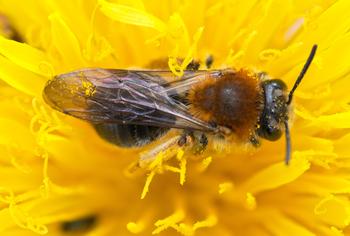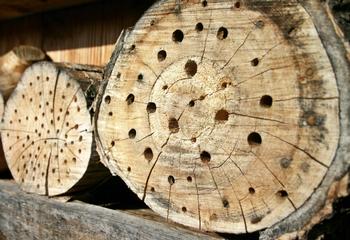Protect our precious pollinators
-
Nanette Londeree
-
Birds, bats, butterflies, and bees are some of our common pollinators. These industrious creatures visit flowers to drink nectar or feed off pollen, then transport the pollen grains between flowers. This process of pollination allows plants to reproduce and about 75% of all flowering plants on the planet need pollinators to get the job done. It’s estimated that one out of every three bites of food we eat is because of pollinators. They also support healthy ecosystems that clean the air, stabilize soils, protect from severe weather, and support other wildlife.
Pollinator populations are changing, and many are in decline. Loss in feeding and nesting habitats are the most significant cause. Pesticides, including insecticides, fungicides, and herbicides, harm pollinators by direct contact with spray residue on plants, through ingestion of contaminated pollen and nectar, or exposure to contaminated nesting sites or materials. We gardeners may contribute to this negative impact through direct use of pesticides, or, unwittingly, by purchasing plants that have been treated with them. Neonicotinoids are very toxic to pollinators like hummingbirds. Photo: PxHere
Neonicotinoids are very toxic to pollinators like hummingbirds. Photo: PxHereInitially introduced as less harmful than older insecticides, neonicotinoids are now the most widely used class of insecticides in the world. Research has shown that neonicotinoids, commonly referred to as “neonics,” are very toxic to pollinators, beneficial insects, and aquatic invertebrates. They are used to manage sap-sucking pests like aphids, on farms, homes, schools, and city landscapes. The active ingredients in neonic containing products are absorbed into the plant and circulated throughout it, making the entire plant, including pollen and nectar, toxic to pollinators that feed on them. The insecticide’s potentially long-lasting presence in plants makes it possible for these chemicals to harm pollinators even when the initial application is made months before the bloom period.
A new study from the University of California (UC), Davis, finds that neonics not only directly affect bee health, but effects from past exposure can carry over to future generations. The study reveals how past pesticide exposure can have lasting impacts, says coauthor Neal Williams, professor of entomology. “One could draw parallels to human health where impacts early in development show up much later in life,” he says. “We just didn’t know the same was true for bees. Now we do and we need to continue to manage risks appropriately.” Solitary bees like this mining bee, are among the first to emerge from their soil nests in spring. Photo: Wikimedia Commons
Solitary bees like this mining bee, are among the first to emerge from their soil nests in spring. Photo: Wikimedia CommonsAnother recent study from UC Riverside, one of the few to examine neonicotinoid effects via ornamental plants on solitary bees, which make up more than 90% of native bee species in California. It has shown neonics to be harmful to a typical bee even when applied well below the label application rate. “Neonicotinoids are often used on food crops as a seed treatment,” explained UC Riverside entomologist and lead study author Jacob Cecola. “But they’re usually applied in higher amounts to ornamental plants for aesthetic reasons. The effects are deadly no matter how much the plants are watered.”
So, what can a gardener do to protect our invaluable pollinators? You can provide habitat for solitary bees by drilling some holes in old logs and placing them in a sunny location. Photo: PxHere
You can provide habitat for solitary bees by drilling some holes in old logs and placing them in a sunny location. Photo: PxHere- Grow a variety of flowers that provide nectar and pollen and that bloom at various times, spring through fall.
- Plant native flowering plants choosing species that are naturally resistant to insect pests.
- Provide habitat by leaving patches of bare ground and brush piles or installing nesting blocks for solitary bees, and plant caterpillar host plants for butterflies and moths.
- Choose plants suited to your environment and select disease and pest-resistant plant varieties.
- Avoid using pesticides. Try the least toxic approach for managing pests – use cultural, mechanical, and biological control methods first.
- Shop at smaller nurseries, green houses, and garden centers that grow their own stock or purchase them locally. Check plant labels or ask staff whether the plants have been treated with neonicotinoids.
Fortunately, many retailers and wholesalers have recognized the risk and have eliminated use of neonics. You can find lists of neonic-free nurseries (including small local native nurseries) online.
Mark your calendars for Saturday, March 12, 2022, for the Marin Master Gardener Pollinator Plant Sale at Falkirk in San Rafael. Visit our website at https://marinmg.ucanr.edu/ for details.



